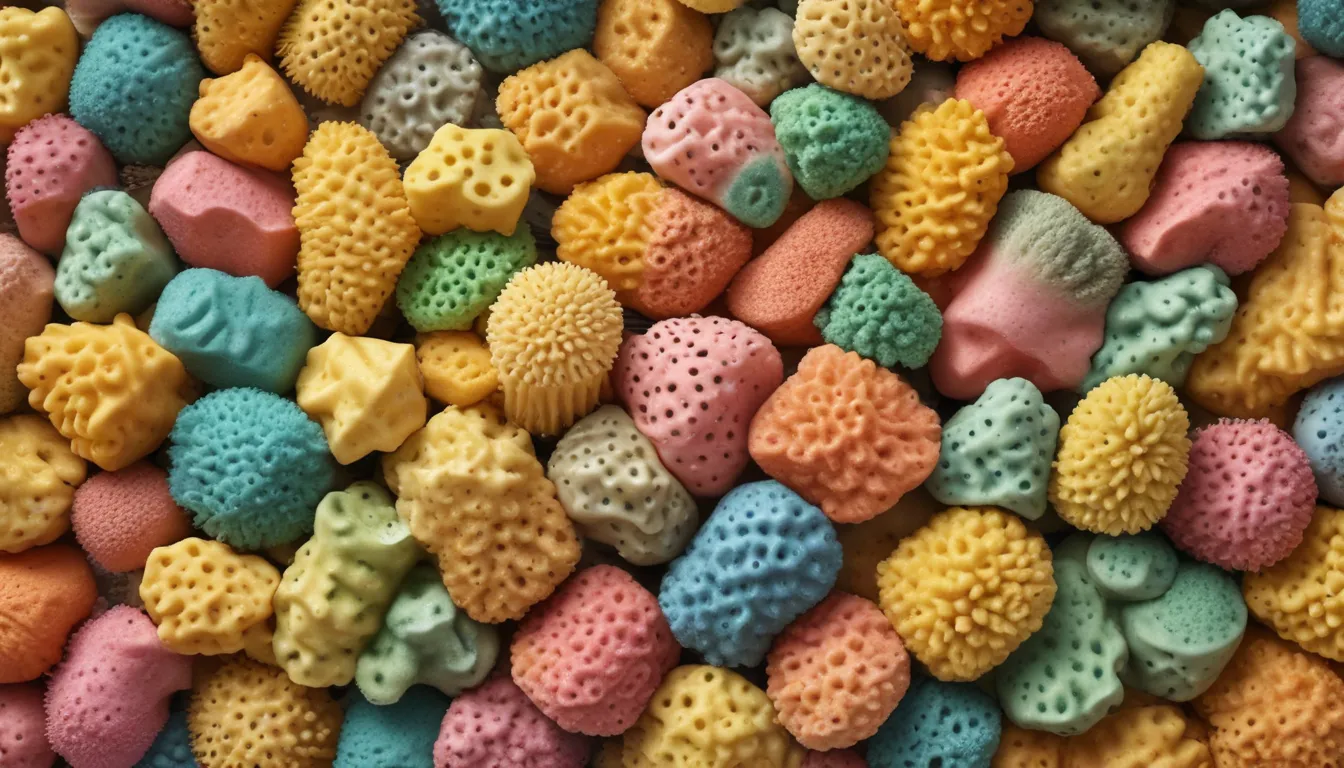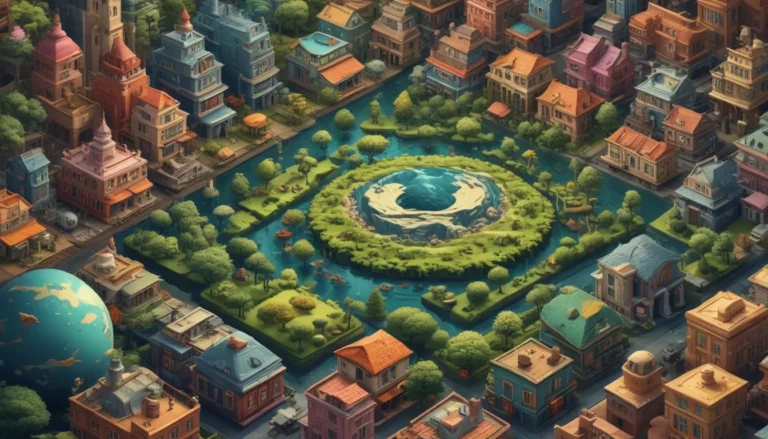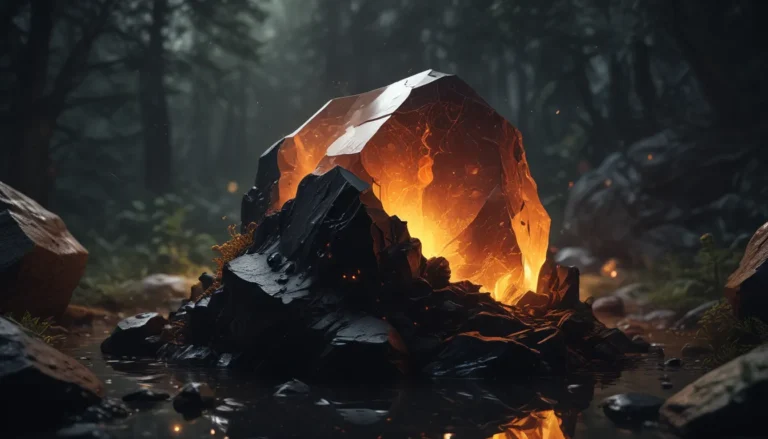A Note About Images: The images used in our articles are for illustration purposes only and may not exactly match the content. They are meant to engage readers, but the text should be relied upon for accurate information.
Welcome to the intriguing world of Porifera, commonly known as sponges, where simplicity meets complexity in the most captivating manner. These ancient marine organisms have been fascinating scientists and nature enthusiasts for centuries, thanks to their unique biology, ecological significance, and surprising attributes. Join us on a journey through 15 fun and captivating facts about Porifera that shed light on their remarkable traits and contributions to the marine world.
Unveiling the Wonders of Porifera
Porifera, or sponges, are the oldest and simplest multicellular animals, boasting over 8,500 known species. Their presence in marine ecosystems is not just a matter of chance but a fundamental aspect of life on Earth. Let’s explore the key takeaways about these fascinating creatures:
- Sponges are essential for marine ecosystems and have inspired new materials and designs in various industries.
- Porifera possess the ability to filter feed, reproduce in diverse ways, and produce compounds with potential medical applications, showcasing their remarkable adaptability and importance.
Delving Into the World of Porifera
1. The Simplest Multicellular Animals
Porifera represent the most primitive of all multicellular animals, lacking true tissues and organs. Despite their simplicity, sponges exhibit a wide range of forms and functions, making them a subject of fascination for researchers.
2. Diverse Species Diversity
With over 8,500 known species, Porifera showcase remarkable diversity, from tiny encrusting forms to large, complex sponges. Each species has its unique characteristics and ecological role, contributing to the rich tapestry of life in marine environments.
3. Masters of Filtration
Sponges are adept filter feeders, drawing in water through choanocytes to capture tiny particles of food. Their role in filtering large volumes of water helps maintain water quality and supports the health of marine ecosystems.
4. Ancient Cleaning Tools
Certain sponge species have been utilized by humans for cleaning and bathing purposes for centuries. The natural absorbent properties of sponges make them ideal tools for various household and personal hygiene tasks.
5. Resilient Organisms
Despite lacking a nervous system and muscles, sponges can respond to external stimuli and exhibit coordinated movements. Their ability to survive and thrive in diverse environments is a testament to their resilience and adaptability.
6. Reproductive Strategies
Porifera can reproduce both sexually and asexually, releasing sperm and eggs into the water for external fertilization or through budding. Their diverse reproductive strategies contribute to the genetic diversity and survival of sponge populations.
7. Ecological Adaptability
From shallow tropical reefs to deep-sea habitats, sponges can be found in a wide range of aquatic environments. Their ability to thrive in diverse conditions highlights their ecological adaptability and importance in maintaining marine ecosystems.
8. Medicinal Potential
Some sponge species produce chemical compounds with potential medical applications, inspiring research in the development of new pharmaceuticals and treatments. Their bioactive compounds offer a valuable source of inspiration for novel therapeutic interventions.
9. Ecosystem Engineers
Sponges play a crucial role in marine ecosystems by contributing to nutrient cycling, providing habitat for other organisms, and supporting the overall balance of marine environments. Their presence is integral to the health and stability of marine ecosystems.
10. Ancient Origins
Fossil records indicate that Porifera have existed for over 500 million years, making them one of the oldest animal groups on Earth. Their ancient origins provide valuable insights into the early evolution of life on our planet.
11. Regenerative Abilities
When damaged, sponges can regenerate and repair themselves, showcasing their remarkable regenerative abilities. Their capacity for self-repair ensures their survival in challenging environments and highlights their resilience in the face of adversity.
12. Intricate Skeletons
The skeletons of certain sponge species boast intricate and beautiful designs, capturing the attention of scientists and collectors alike. The structural complexity of sponge skeletons offers insights into their evolutionary history and ecological adaptations.
13. Bioluminescent Marvels
Certain sponge species exhibit bioluminescence, emitting light that adds to the allure of these captivating organisms. Their ability to produce light showcases the remarkable diversity of adaptations found in the marine world.
14. Innovators’ Inspiration
Researchers have drawn inspiration from sponge structures to develop innovative materials with applications in engineering and architecture. The unique properties of sponge skeletal structures have inspired advancements in various industries, showcasing the versatility and adaptability of Porifera.
Porifera, or sponges, continue to captivate scientists and nature enthusiasts with their ancient origins, diverse forms, and ecological contributions. By exploring these 15 fun facts about Porifera, we gain a deeper appreciation for the complexity and significance of these remarkable marine organisms, underscoring their vital role in the tapestry of life on Earth.
Journey Into the World of Sponges
In conclusion, Porifera, commonly known as sponges, are fascinating organisms with a rich evolutionary history and unique biological characteristics. Their simplicity belies a wealth of complexity that enriches our understanding of the natural world. By unraveling the mysteries of Porifera and their intriguing traits, we gain valuable insights into the resilience, adaptability, and ecological significance of these ancient marine organisms. Let the wonders of Porifera inspire you to explore further and appreciate the beauty and diversity of life beneath the ocean’s surface.
FAQs
What is the significance of Porifera in marine ecosystems?
Sponges play vital roles in marine ecosystems by filtering large volumes of water, removing bacteria and organic particles, and recycling nutrients. Additionally, they provide habitats for various marine species, contributing to the overall biodiversity of coral reefs and other marine environments.
How do sponges inspire innovations in industries?
The unique properties of sponge skeletal structures have inspired innovations in materials science and engineering. Researchers have explored applications in biomedicine, environmental remediation, and even architecture, drawing inspiration from the remarkable adaptability and resilience of Porifera.
We strive to provide you with accurate and engaging content that enhances your knowledge and appreciation of the natural world. Each fact shared here is contributed by real users like you, ensuring a diverse range of insights and information. Trust in our commitment to quality and authenticity as you embark on your journey of exploration and discovery with us. Dive deep into the world of sponges and uncover the wonders that await beneath the waves.





